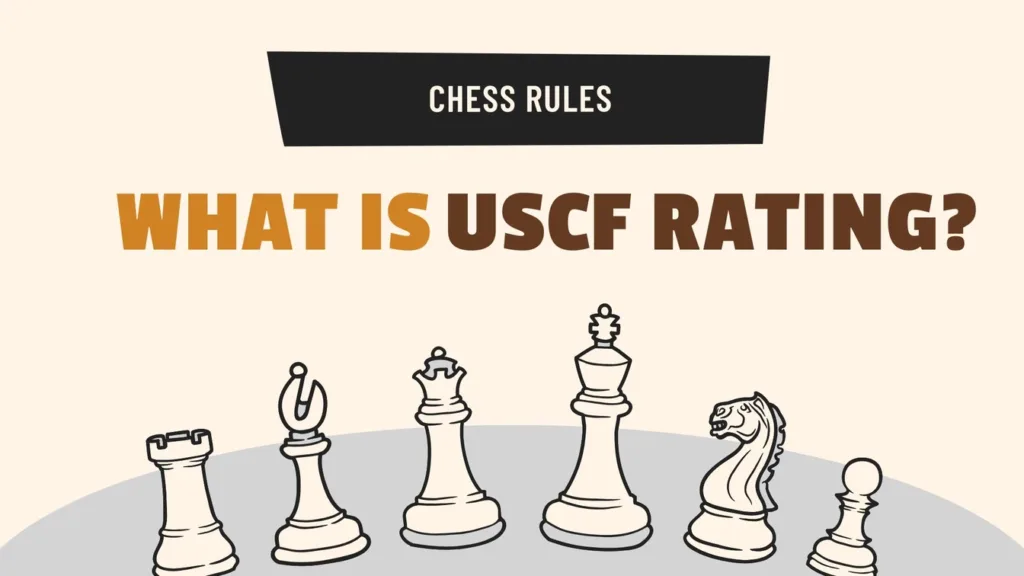If you’ve played chess in the United States, you’ve probably heard of the USCF rating. It’s a number that shows how strong you are compared to other players, used by the United States Chess Federation (USCF). But what does that number actually mean? How does it go up or down? Let’s break it down in plain English.
It’s All About Performance
The USCF rating is based on the Elo system, which is used all over the world, including by FIDE, the international chess federation. In short, your rating goes up when you perform better than expected, and down when you underperform. The size of the change depends on who you play, how strong they are, and how many games you’ve played before.
Beat Stronger Players, Gain More Points
Let’s say your rating is 1200. You beat someone rated 1400. That’s a surprise win, so you’ll get a nice boost. But if you lose to someone rated 1000, your rating takes a bigger hit. If you draw, it depends. Drawing with someone higher-rated can still gain you points. Drawing with someone much lower may cost you.
Two Main Rating Types: Provisional vs. Established
1. New Players (Provisional Rating)
If you’ve played 8 or fewer games, your rating is provisional. The system doesn’t use a fixed formula here. Instead, it looks at how you did in your games and adjusts your rating quickly to match your real strength. It doesn’t punish you for winning or reward you for losing, just aims to get you to the right ballpark fast.
2. Experienced Players (Established Rating)
Once you’ve played more than 8 rated games, you get an established rating. Then the math becomes more stable. It looks like this:
New Rating = Old Rating + K × (Your Score − Expected Score)
Let’s decode that:
- K is a number that controls how fast your rating changes.
- If you’re new or improving quickly, your K is higher.
- If you’re experienced and already rated high, your K is lower.
- Your Score is how many points you earned. Win = 1, draw = 0.5, loss = 0.
- Expected Score is what the system thought you’d score, based on ratings. The bigger the surprise, the bigger the rating change.
Bonus Points for Breakout Performances
If you play 3 or more games in a tournament and do way better than expected, you might earn bonus points. This is USCF’s way of rewarding exceptional results.
What’s the Lowest Your Rating Can Go?
USCF ratings have something called rating floors. That means there’s a minimum level your rating can fall to, based on your past achievements.
- Absolute minimum: 100
- If you’ve ever been rated 1500, you’ll likely have a floor at 1300, so you won’t fall too far even after a bad streak.
- Some floors are based on big tournament wins or titles, like Life Master, which locks in a 2200 floor.
Different Ratings for Different Speeds
USCF actually tracks six different ratings for you, depending on the time control and whether the game was online or in-person.
- Over-the-Board (OTB): Regular, Quick, and Blitz
- Online: Regular, Quick, and Blitz
These are separate. So you could have a 1600 rating in OTB Blitz and only 1200 in Online Regular. They don’t mix, each rating stands on its own.
USCF vs. FIDE: What’s the Difference?
Both USCF and FIDE use the Elo system, but there are differences:
- USCF ratings often run a little higher than FIDE ratings.
- USCF has more rating categories and personal floors.
- FIDE requires you to play in specific rated tournaments to get your rating.
- USCF will even give you a rating based on your FIDE or Canadian rating if you’re just starting in the U.S.
I’m the senior editor of Attacking Chess, a keen chess player, rated above 2300 in chess.com. You can challenge me or asking questions at Chess.com.

